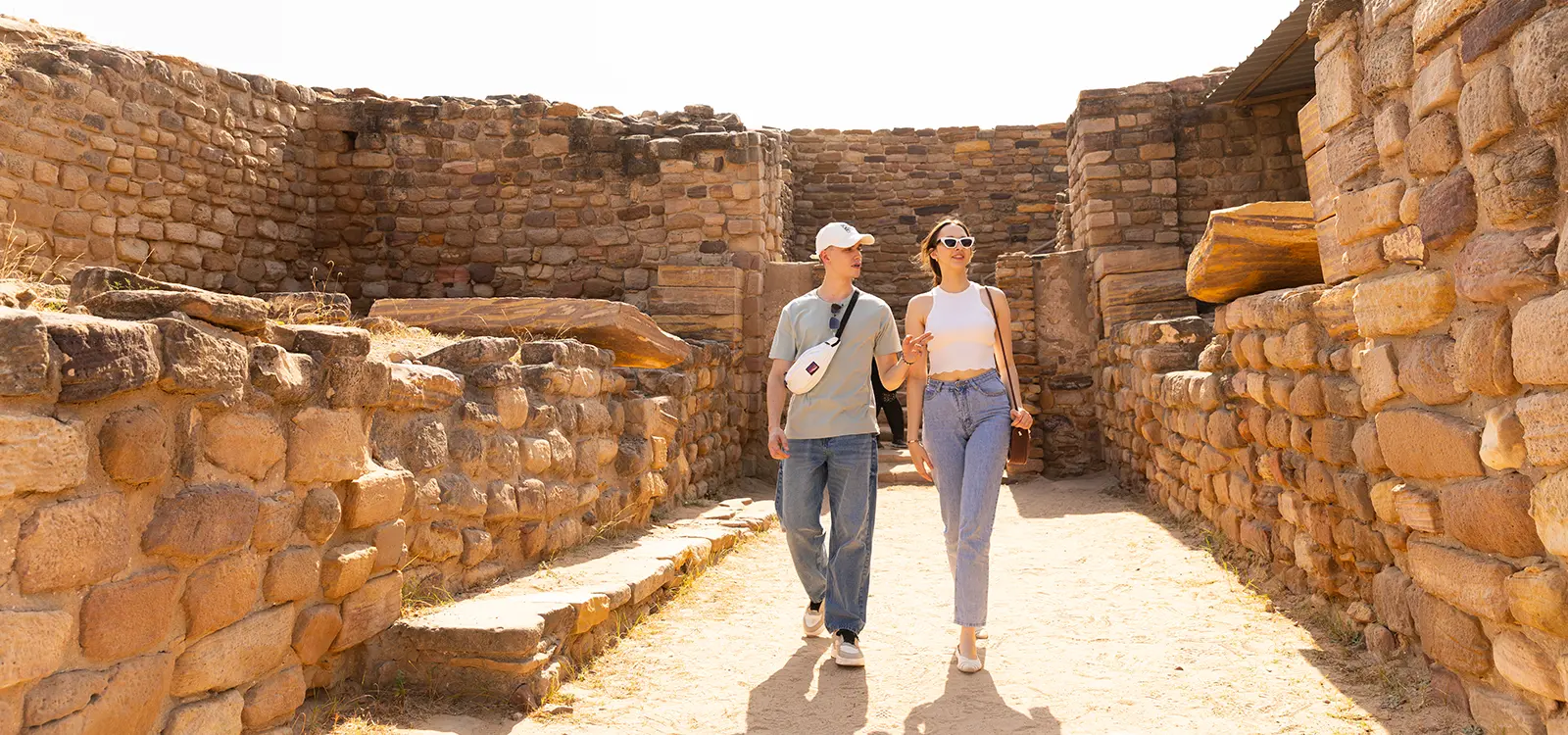Dholavira vs. Mohenjo-Daro: Comparing Two Great Harappan Cities
Introduction: The Greatness of Harappan Civilization
Long ago, before maps were drawn and nations were born, a great civilization thrived on the banks of rivers in what is now India and Pakistan. This was the Harappan Civilization, also called the Indus Valley Civilization—one of the oldest urban civilizations in the world, along with Mesopotamia and Egypt. It was a land of skilled architects, smart engineers, and organized city life. Two of its shining examples were Dholavira and Mohenjo-Daro.
Today, when we compare Dholavira vs Mohenjo-Daro, we open a window into the past. Both cities had wide roads, sturdy houses, and an advanced sense of planning. But they also had their own stories to tell. Let’s take a closer look.
Geographical Location and Discovery
Dholavira is located in the Khadir Bet island of the Rann of Kutch, Gujarat, India. It was discovered in 1967 by archaeologist J.P. Joshi and is one of the most well-preserved sites in India.
Mohenjo-Daro, meaning “Mound of the Dead,” lies on the bank of the Indus River in present-day Sindh, Pakistan. It was discovered in the 1920s and quickly became a symbol of ancient urban greatness.
These two cities sit hundreds of kilometers apart but are connected by the same cultural roots of the ancient Harappan civilization.
City Planning and Architecture
One of the most fascinating things about the Harappan civilization’s history is its incredible city planning.
Dholavira was designed with three main zones: the citadel, the middle town, and the lower town—all surrounded by massive stone walls. This three-part layout is unique among Harappan cities. The use of locally available stone instead of bricks also sets it apart.
Mohenjo-Daro architecture, on the other hand, was more brick-focused. It had well-organized streets, a drainage system, and public buildings like the famous Great Bath. The city was divided into the citadel and a lower town.
Both cities show how intelligent and advanced urban planning was over 4,000 years ago.
Water Conservation and Drainage Systems
Dholavira is famous for its smart water management. It had reservoirs, underground drains, and channels that stored rainwater and made life possible in the arid desert.
Mohenjo-Daro also had an efficient drainage system, but it relied more on the nearby river for water. Public baths, wells, and sewage systems were common, showing their emphasis on cleanliness.
The level of water planning in both cities proves that the mohenjo daro civilization and Dholavira people were skilled engineers.
Inscriptions, Script, and Symbolism
In both cities, archaeologists found seals with script that still remain undeciphered. These symbols might have been used for trade or religious purposes.
Dholavira had a special discovery—ten large letters on a wooden board, making it one of the earliest examples of a signboard. Though we still don’t understand the Harappan script, it shows their effort to communicate and organize.
These symbols continue to intrigue historians and highlight the cultural richness of the ancient Harappan civilization.
Trade, Economy, and Daily Life
Dholavira was a trading hub, with evidence of links to Mesopotamia and other Harappan cities. Artifacts such as beads, shells, and pottery suggest a rich life of commerce and craft.
Mohenjo-Daro was also a center of trade and daily life. People were skilled in making jewelry, tools, and ceramics. Farmers grew wheat and barley. Merchants likely traded goods across rivers and beyond.
Despite being from 2500 BCE, their organized economy is something modern cities can admire.

UNESCO World Heritage Status and Tourism
In 2021, Dholavira was named a UNESCO World Heritage Site, making it one of only four in Gujarat. This recognition brought global attention to this hidden gem.
Today, tourists can explore Dholavira through guided tours, stay at heritage-inspired properties like Evoke Dholavira, and enjoy the serene landscapes of the Rann of Kutch.
For travelers seeking an accessible and immersive Harappan experience, Evoke Dholavira is a perfect stay option for cultural explorers.

Final Thought: Stay Smart, Stay Comfortable
When you compare Dholavira vs Mohenjo-Daro, you don’t just compare two old cities—you explore two unique journeys into the past. From smart city layouts and clever water systems to seals and scripts that remain a mystery, both cities were way ahead of their time.
While Mohenjo Daro civilization is older in recognition, Dholavira offers a more accessible and immersive experience today—especially for Indian and international tourists.
If you want to feel the history under your feet, touch the stones that once built a mighty city, and stay close to the heart of this heritage—Evoke Dholavira awaits you. Come for the history, stay for the hospitality.
FAQs – Your Questions Answered
The ideal time to visit Dholavira is between October and March when the weather is pleasant and perfect for sightseeing.
You can drive from Bhuj to Dholavira, a scenic 2-3 hour journey through the Rann of Kutch. Also If you have opted for an All inclusive plan at Evoke Dholavira, there is complementary pick up and drop from Bhuj.
Yes, Evoke Dholavira offers comfortable and culturally inspired stays for tourists visiting this UNESCO site.
Absolutely! The site offers open spaces, engaging history, and plenty to learn for kids and adults alike.
Dholavira used stone instead of bricks and featured a three-zone layout along with advanced rainwater harvesting systems.
Apart from Dholavira, sites like Kalibangan and Rakhigarhi are key parts of Harappan civilization history in India.
Yes, you can combine your visit to the Rann Utsav with a heritage trip to Dholavira—both are located in the Kutch region.

